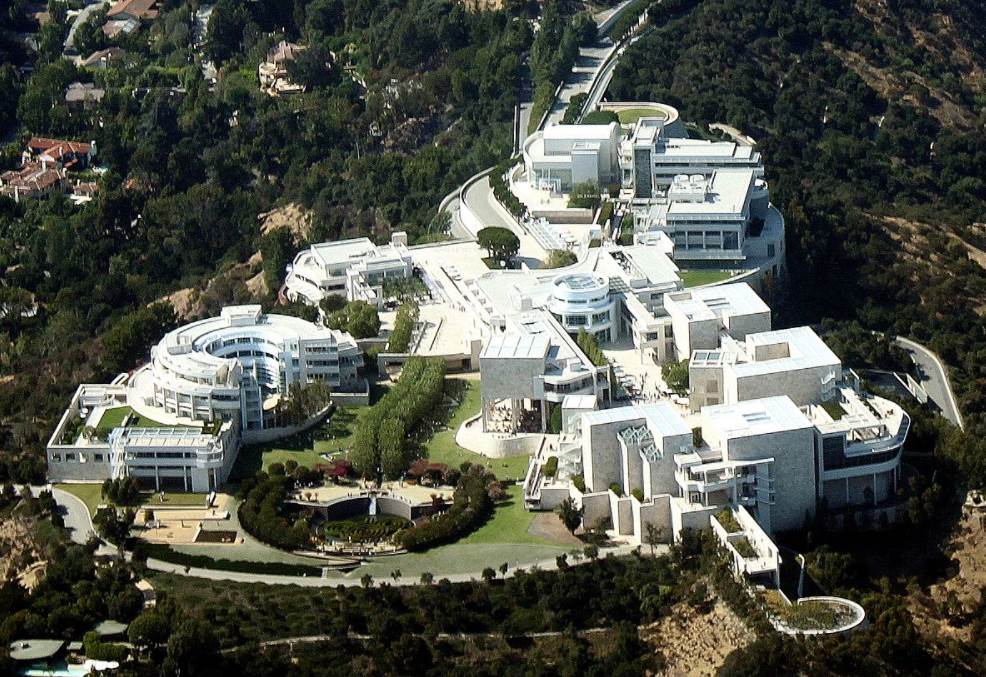Did you know that the historic Roman Forum in the heart of the Italian capital was once a meadow with grazing cows for many centuries?
It was only in the late 19th century that serious excavations were begun to uncover the architectural ruins of the once-thriving marketplace of ancient Rome.
An English artist painted the Roman Forum at the height of his career and it provides a glimpse of how it looked like at this time.
Let’s take a closer look at some of the most interesting facts about Modern Rome – Campo Vaccino, one of J.M.W. Turner’s famous paintings.
1. The painting was completed during the late 1830s
Joseph Mallord William Turner (1775-1851) exhibited his first major oil painting titled “Fishermen at Sea” at the Royal Academy in London in 1796.
The Romantic artist was in his early twenties at the time and it was the start of a successful career that lasted nearly 6 decades.
Turner lived and worked in London for his entire life but frequently traveled as well. The eccentric artist made sketches wherever he went and completed landscapes and cityscapes in his London-based studio.
By the 1830s, he was already one of the most renowned artists in Europe, a notion that is emphasized by the fact that King Louis Philippe I of France gave him a gold snuff box as a present in 1838.
He completed Modern Rome – Campo Vaccino in 1839 and it’s one of his most remarkable works for many reasons.
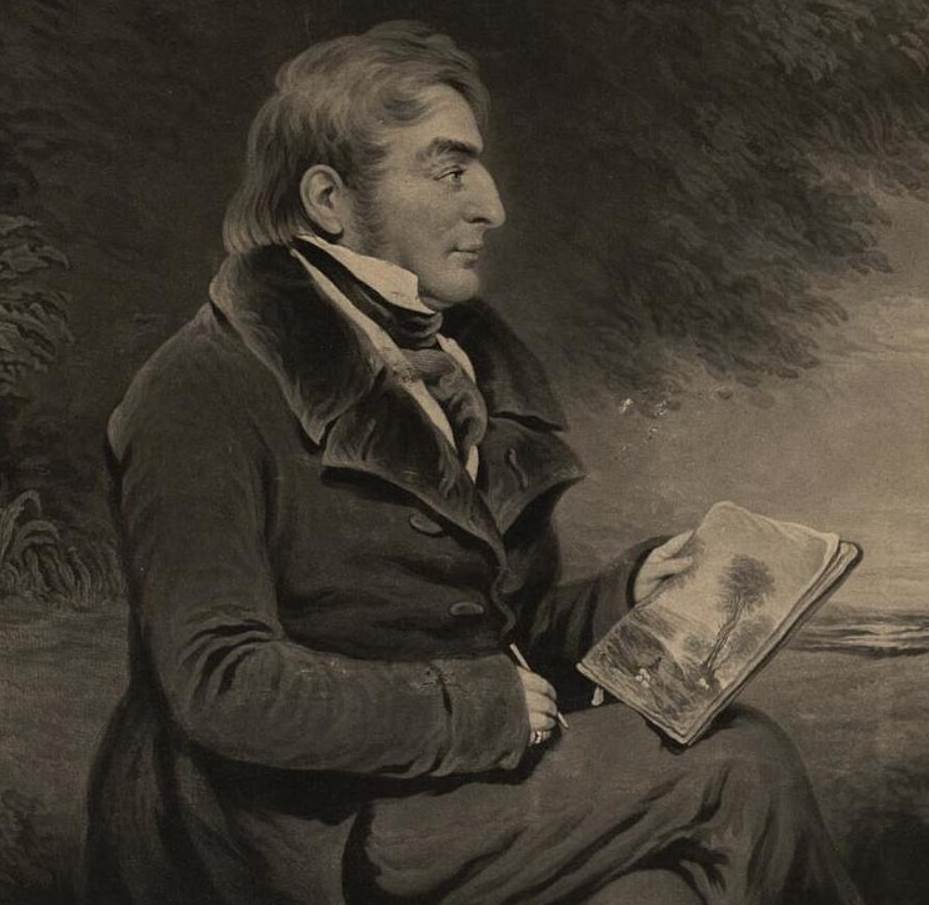
2. It depicts the Roman Forum before serious excavations had begun
The Roman Forum was the busy marketplace of the ancient city. It was the heart of the Roman Empire for multiple centuries and featured many government buildings and monuments.
These architectural marvels lay in ruins by the time Turner visited the city in the 19th century, but some clearing had been done already.
In 1803, the famous Arch of Septimius Severus was uncovered, a triumphal arch that sticks out in the bottom left corner of this painting.
Not much changed after this and the first serious excavations were only started in 1898, long after Turner completed this masterpiece.
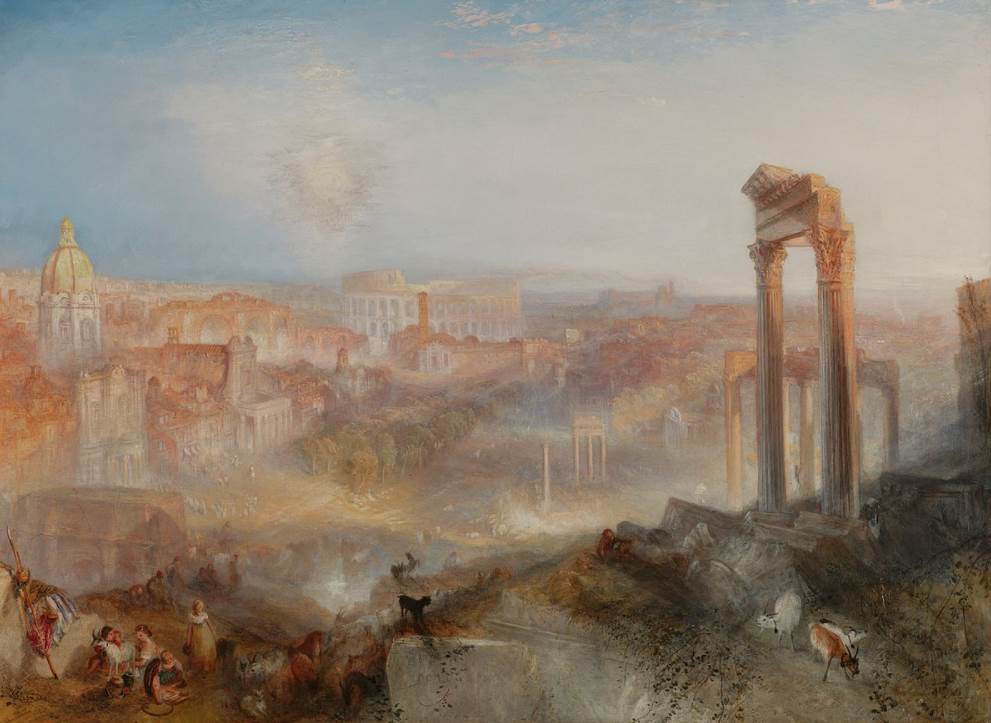
3. Turner completed it from various sketches he had made during two visits
The reason why it was referred to as “Campo Vaccino” back then was because of the fact that the former ancient Roman square was used as a grazing field for cows.
Campo Vaccino translates to “Cow Meadow” or “Cow Pasture,” an accurate description of this place when Turner walked around here.
The artist made several sketches of Rome and its Roman Forum and brought them back to London where he lived.
He completed this painting by compiling several of the preparatory drawings together into a fascinating work of art.
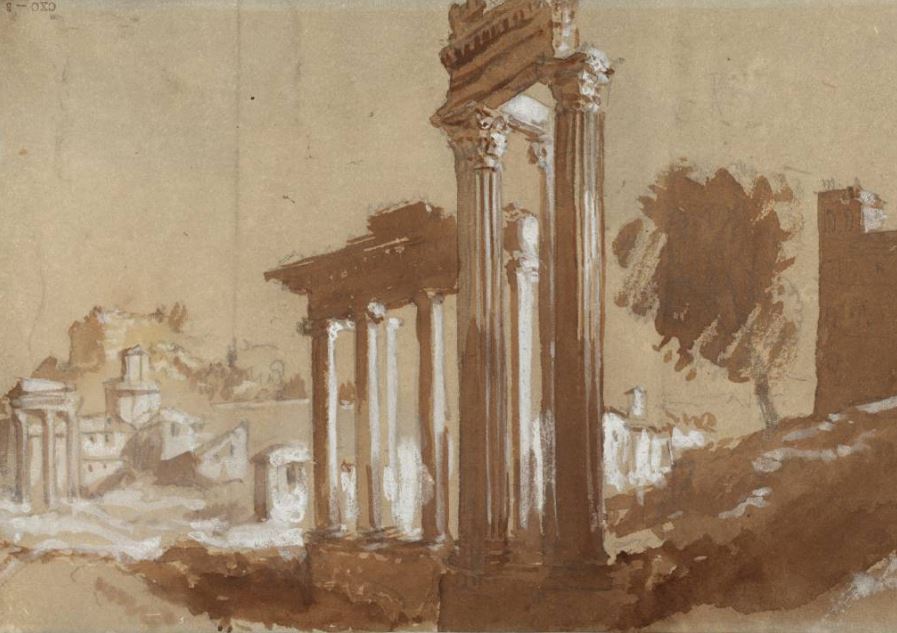
4. It was the final painting that Turner ever made of Rome
The English painter completed several other oil paintings that he completed based on the drawings he made during his visits to Rome.
Another notable work in his oeuvre is titled “Rome, From Mount Aventine,” a cityscape he completed a few years earlier in 1835 based on drawings he made in 1828.
Both works are very similar in composition and also incorporate the shimmering hazy light that makes his artworks so magical.
This painting was sold in an auction at Sotheby’s in London in 2014. It was bought by an anonymous telephone bidder and fetched £30.3 million.
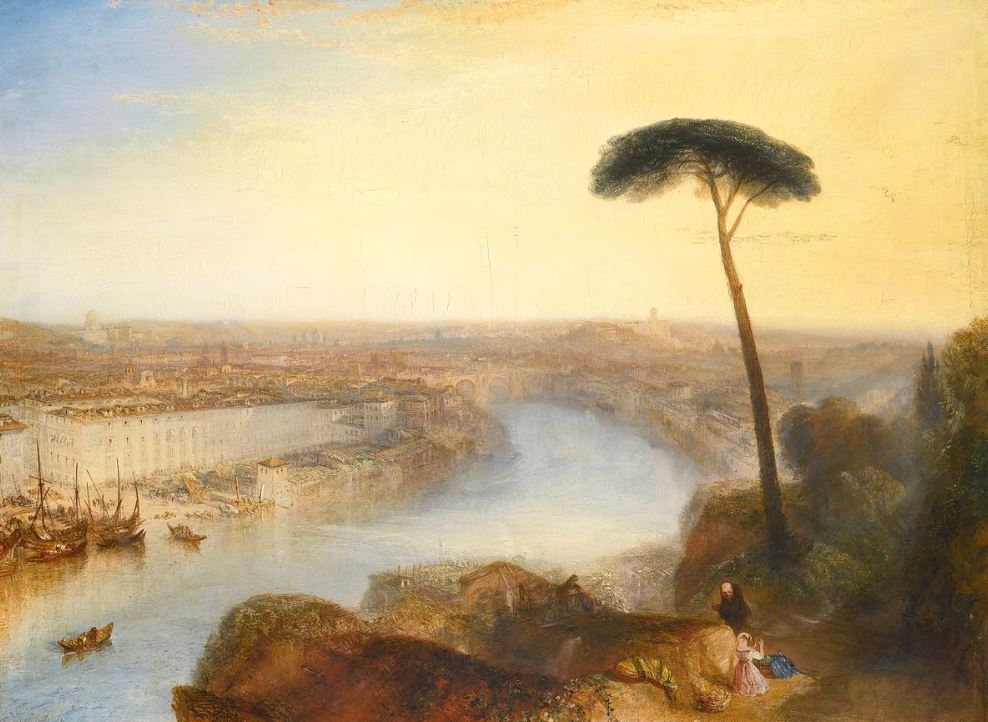
5. Turner had a specific motif for this magnificent work of art
The Roman Forum with the Colosseum in the background bathes in a reddish-orange hue, painted in a style that only Turner could complete.
What’s fascinating is that the artist added both classical buildings and structures built during the Renaissance and Baroque eras.
He wanted to accentuate the rise and fall of civilizations, more specifically, the fall of the ancient Roman Empire.
He could hardly find a better place to depict this motif. The most important spot of ancient Rome was reduced to a place for cattle to graze.
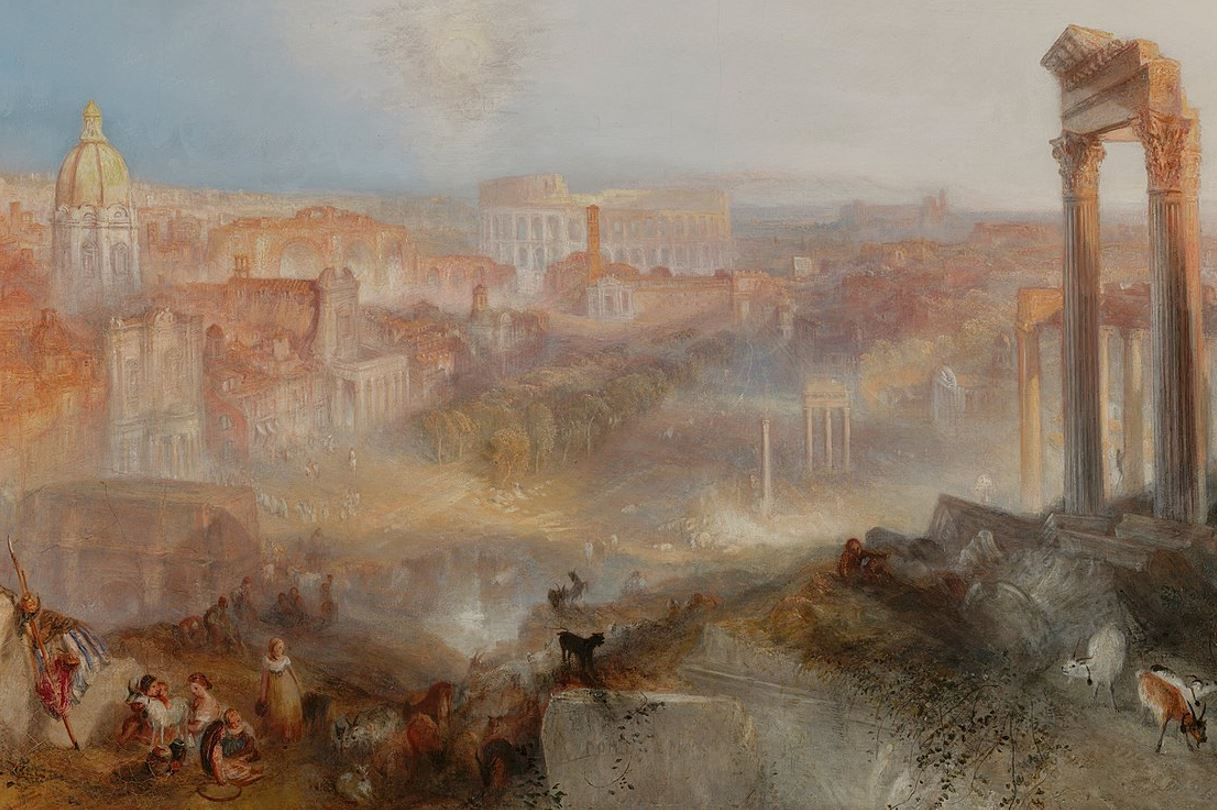
6. The painting was sold thrice and fetched £29.7 million back in 2010
Turner’s magnificent cityscape of Rome seen from the Aventine Hill fetched a huge amount of money, but Modern Rome – Campo Vaccino was sold for nearly the same amount several years earlier.
It was first sold to British art collector Hugh Munro at the exhibition of the Royal Academy where it was displayed for the first time in 1839.
It was sold once again in 1878 by the 5th Earl of Rosebery and his wife Hannah Rothschild during their honeymoon in 1878. It hung at the Rothschild mansion known as Mentmore Towers for over a century.
It was finally auctioned at Sotheby’s in London in 2010 and sold for the astronomical fee of £29.7 million.
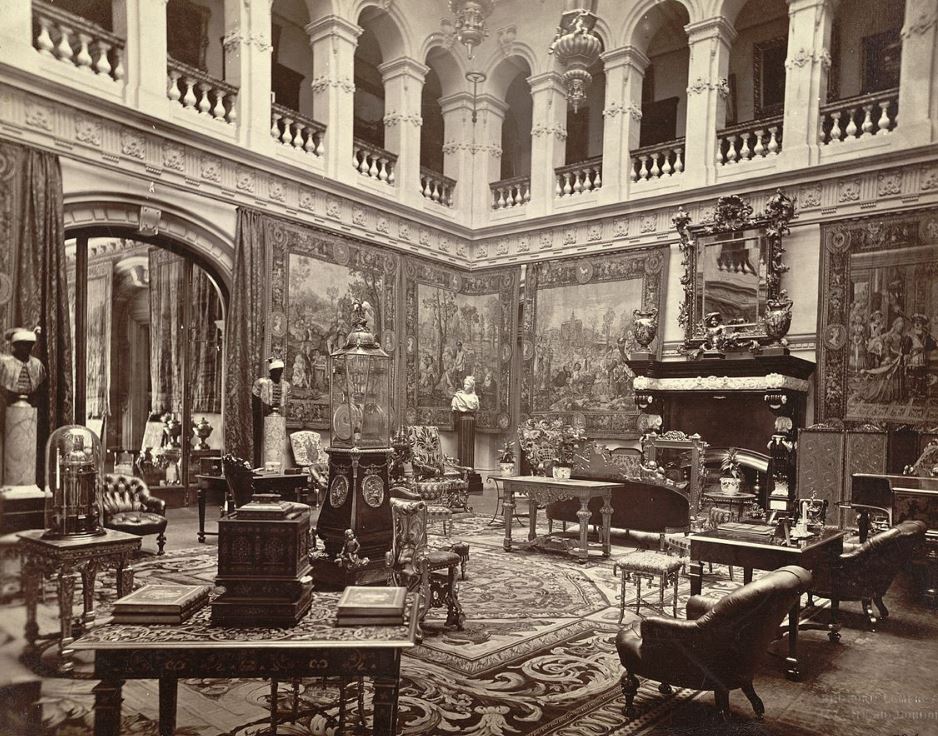
7. How big is Modern Rome – Campo Vaccino by J.M.W. Turner?
The size of the painting definitely isn’t the reason why it was sold for such a huge amount. The quality and the reputation of J.M.W. Turner as an artist were.
Modern Rome – Campo Vaccino by J.M.W. Turner is a medium-sized oil on canvas painting that has dimensions of 90.2 × 122 centimeters (35.5 × 48 inches).
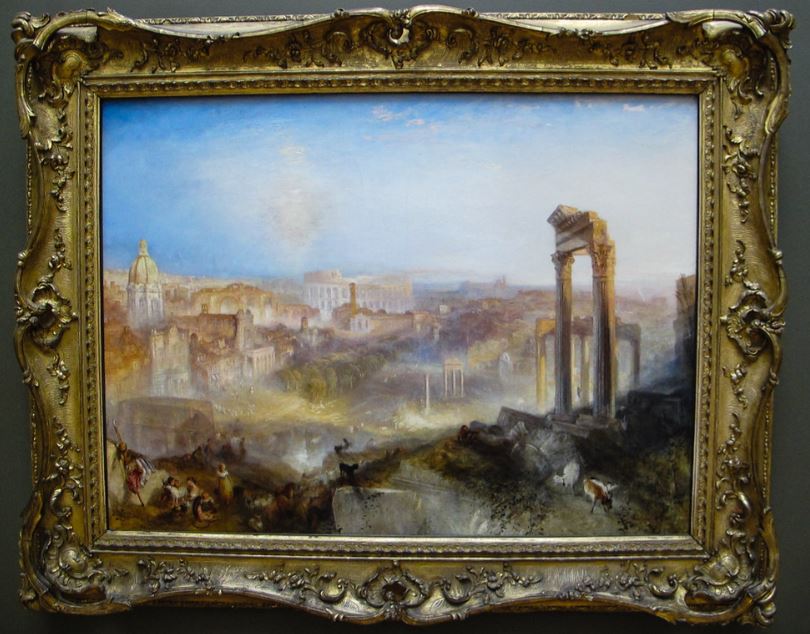
8. Where can we admire Turner’s masterpiece today?
Did you know that it only took 5 minutes for the painting to sell for nearly £30 million on July 7, 2010?
Art dealer Hazlitt Gooden and Fox were given permission by the J. Paul Getty Museum in Los Angeles to spend their money and they quickly sealed the deal.
It took until February 3, 2011, before the museum got the export license and it was placed at the British Gallery of the West Pavilion, Gallery W201 of The Getty shortly after.
